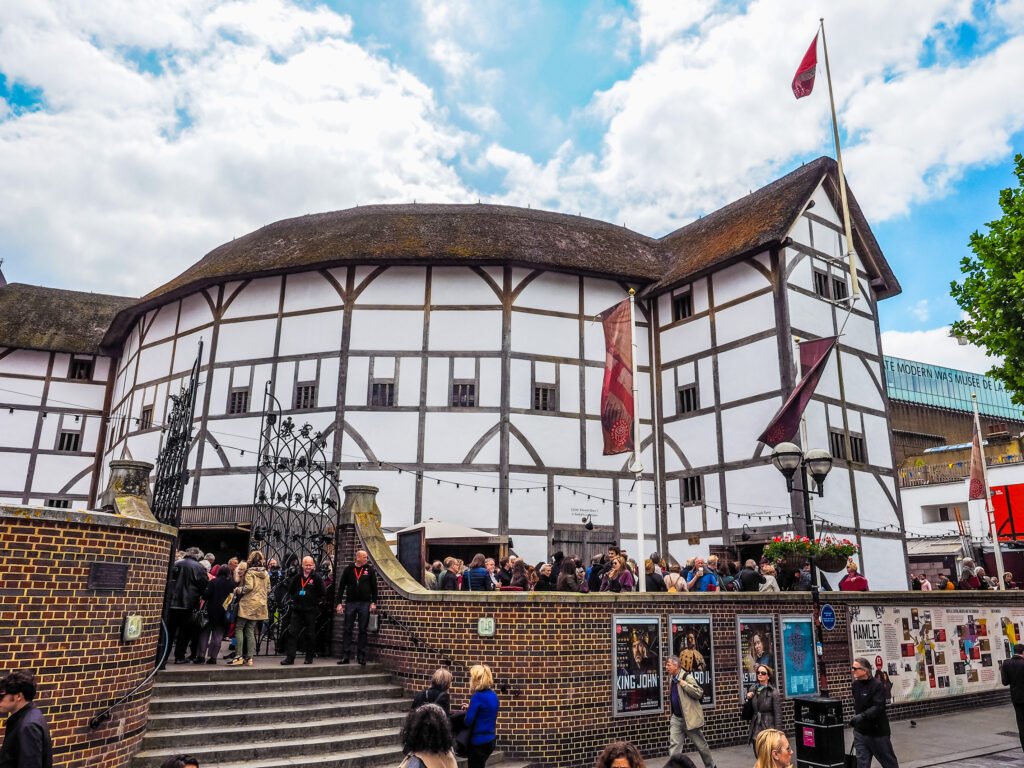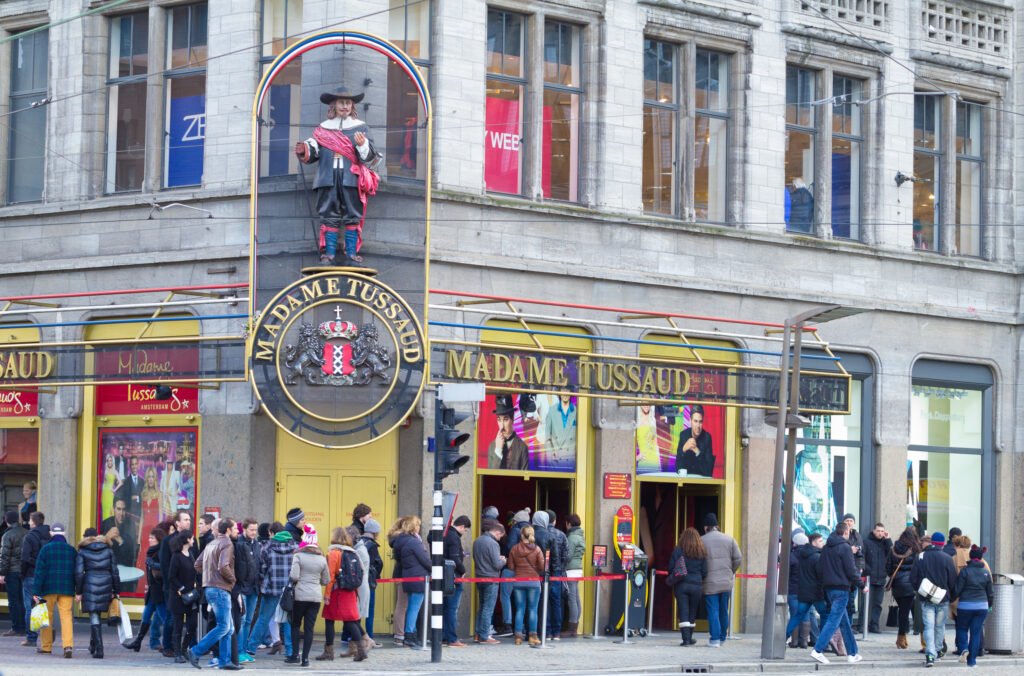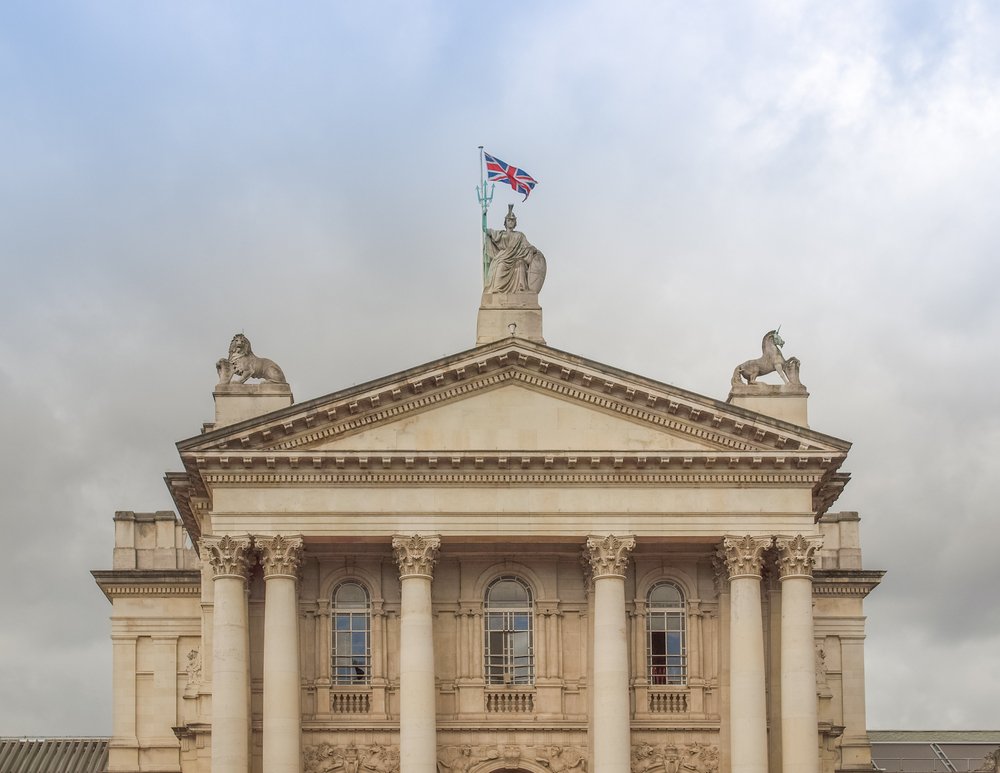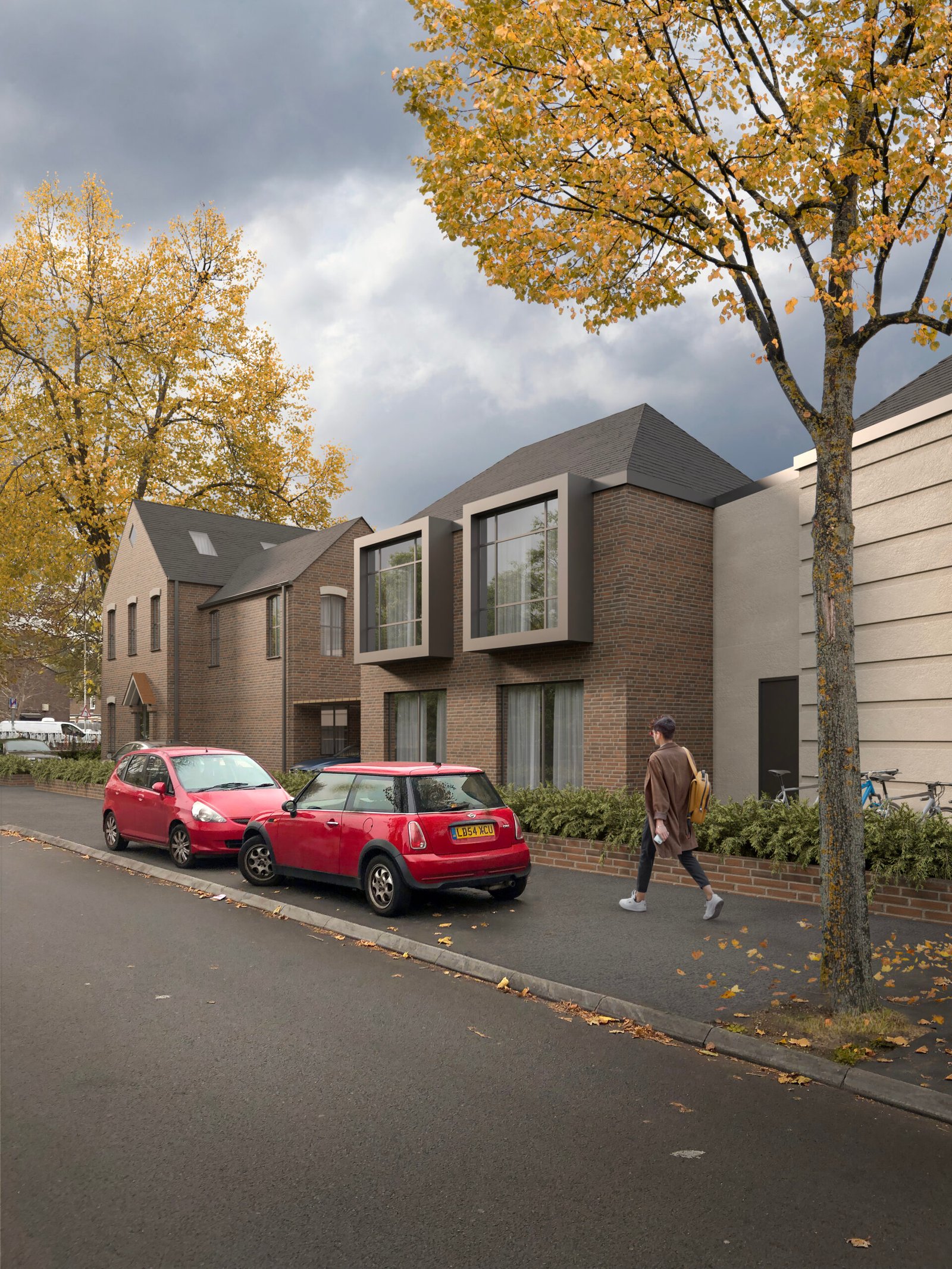
The vibrant heart of London’s West End, Shaftesbury Avenue is a dazzling street lined with iconic theaters, showcasing everything from blockbuster musicals to avant-garde plays.
⦁ Interesting Fact: This avenue, named after philanthropist Lord Shaftesbury, was a significant development in the late 1800s, becoming a cornerstone of London’s cultural scene.
⦁ Reason to Visit: Revel in the thrill of live theater and enjoy some of the world’s most spectacular stage productions.
⦁ Directions: Adjacent to Leicester Square Underground Station, making it highly accessible.


⦁ The Globe Theatre is a faithful reconstruction of Shakespeare’s original theater, offering a unique opportunity to experience his plays as they were originally performed.
⦁ Interesting Fact: Located just a few hundred yards from the site of the original Elizabethan theater, the Globe offers a chance to step back in time to the age of Shakespeare.
⦁ Reason to Visit: Immerse yourself in the world of Shakespeare with open-air performances in an authentic Elizabethan setting.
⦁ Directions: Within a 15-minute walk from Blackfriars, Mansion House, Southwark, and St Pauls stations.
⦁ The South Bank is a bustling riverside walk known for its arts venues like the National Theatre and the Royal Festival Hall, along with its vibrant cultural scene.
⦁ Interesting Fact: Once a bustling center of trade and entertainment in Elizabethan London, the South Bank has evolved into a modern cultural hub.
⦁ Reason to Visit: Experience the lively atmosphere with free live music, riverside dining, and stunning views of the Thames.
⦁ Directions: Closest to Waterloo Underground Station.


⦁ Madame Tussauds Wax Museum is a unique attraction filled with lifelike wax figures of celebrities, historical figures, and royalty, offering an interactive experience.
⦁ Interesting Fact: The museum’s origins trace back to the French Revolution, with Marie Tussaud creating death masks for executed nobles, which later evolved into a famous wax exhibition.
⦁ Reason to Visit: Snap selfies with your favorite celebrities and historical figures in this immersive and fun experience.
⦁ Directions: Just a short walk from Baker Street Underground Station.
⦁ Once known for 18th-century duels, Leicester Square is now a vibrant center of entertainment, filled with cinemas, theaters, and lively street performers.
⦁ Interesting Fact: The square’s transformation from a dueling ground to a hub of entertainment reflects London’s dynamic cultural evolution.
⦁ Reason to Visit: Dive into the heart of London’s entertainment scene, perfect for a night out or a lively day excursion.
⦁ Directions: Easily accessible from Leicester Square Underground Station.


⦁ London’s largest and most famous park, Hyde Park is an oasis of tranquility and natural beauty, offering a range of activities from boating to open-air concerts.
⦁ Interesting Fact: Host of the 1851 Great Exhibition in the Crystal Palace, Hyde Park has long been a venue for major events and cultural gatherings.
⦁ Reason to Visit: Relax in the serene surroundings, enjoy a concert, or explore historical monuments within the park.
⦁ Directions: Accessible via the Underground to Hyde Park Corner.
⦁ Description: Carnaby Street, once the epicenter of the Swinging Sixties, remains a vibrant street known for its fashion boutiques, unique shops, and lively atmosphere.
⦁ Interesting Fact: In the 1960s, Carnaby Street was the heart of London’s counterculture fashion scene, attracting trendsetters and cultural icons.
⦁ Reason to Visit: Explore the birthplace of British fashion’s golden era and discover trendy shops and vibrant street life.
⦁ Directions: A short walk from Piccadilly Circus and Oxford Circus Underground Lines.


⦁ More than just a department store, Harrods is a grand emporium, offering a lavish shopping experience with an array of luxury goods and exclusive services.
⦁ Interesting Fact: Known for its extraordinary offerings, Harrods once famously sold an exotic cobra as a unique guard for a pair of high-end sandals.
⦁ Reason to Visit: Dive into a world of luxury and experience the pinnacle of shopping opulence.
⦁ Directions: A stone’s throw away from Knightsbridge Station.
⦁ A bustling hive of activity, Piccadilly Circus is famous for its neon lights and the iconic Statue of Eros, making it one of London’s most photographed spots.
⦁ Interesting Fact: The area’s electronic billboards, a hallmark of the circus, have been a distinctive feature since 1908, evolving from simple lightbulbs to today’s high-tech screens.
⦁ Reason to Visit: Experience the dynamic heart of London, where the energy of the city is palpable day and night.
⦁ Directions: Easily accessible by various public transport options in central London.


⦁ A cozy 600-seat theater in Hayes, renowned for its diverse range of high-quality performances including gripping dramas, hilarious comedies, and enchanting musicals.
⦁ Interesting Fact: This theater, a cornerstone of local culture since 1977, was named in honor of Councillor Alfred Beck, a champion for the arts in Hayes.
⦁ Reason to Visit: Immerse yourself in the rich world of performing arts, with each show offering a unique and memorable experience.
⦁ Directions: Easily accessible by bus (278, H98, or 195) or a pleasant 15-20 minute walk from the hotel.
⦁ A jewel in the crown of British horse racing, Ascot Racecourse is synonymous with elegance and sporting excellence, hosting the prestigious Royal Ascot.
⦁ Interesting Fact: Ascot’s storied history began with Queen Anne in 1711, and it has since become a symbol of British heritage and high society.
⦁ Reason to Visit: Experience the pinnacle of horse racing glamour, especially during the Royal Ascot, a social and sporting event attended by royalty.
⦁ Directions: Reachable by train from Hayes and Harlington Station, involving a train change.


⦁ Majestic Windsor Castle, with its imposing towers and battlements, is the world’s largest inhabited castle and a favorite residence of British monarchs.
⦁ Interesting Fact: This castle has been a symbol of royal power and continuity for over 900 years, with a rich history that spans medieval conquests to modern royal ceremonies.
⦁ Reason to Visit: Delve into the heart of British history, exploring luxurious state rooms and priceless art collections.
⦁ Directions: A train journey from Hayes and Harlington to Slough, then a short ride to Windsor and Eton Central.
⦁ Once home to King Henry VIII, Hampton Court Palace is a tapestry of Tudor history, boasting stunning gardens, a world-famous maze, and grand halls.
⦁ Interesting Fact: The Great Vine at the palace, planted in 1768, holds the record as the world’s largest grapevine, a living symbol of the palace’s opulent past.
⦁ Reason to Visit: Step back in time in this Tudor marvel, exploring its historic kitchens, beautiful gardens, and the legendary maze.
⦁ Directions: Take a bus to Heathrow Central, followed by a direct bus to the palace.


⦁ A Gothic architectural masterpiece on the banks of the Thames, the Palace of Westminster is home to the UK’s Houses of Parliament and the iconic Big Ben.
⦁ Interesting Fact: Big Ben, the name often attributed to the clock tower, is actually the nickname for the Great Bell inside, named after Sir Benjamin Hall who oversaw its installation.
⦁ Reason to Visit: Witness the grandeur of British politics and architecture, and hear the famous chimes of Big Ben.
⦁ Directions: A brief walk from Westminster Underground Station, amidst the hustle and bustle of London.
⦁ A fortress, royal palace, and former prison, the Tower of London is steeped in over a thousand years of British history, including serving as a royal menagerie and treasury.
⦁ Interesting Fact: The Tower has played numerous roles, from housing lions and polar bears in its royal menagerie to being the site of infamous executions.
⦁ Reason to Visit: Explore this iconic symbol of London’s history, with the Crown Jewels and haunting tales of prisoners and executions.
⦁ Directions: Reachable via the Underground to Tower Gateway (DLR Station), a journey into the past.


⦁ Greenwich is a charming area steeped in maritime history, home to the Royal Observatory, the historic Cutty Sark, and the Greenwich Meridian Line.
⦁ Interesting Fact: Here lies the Prime Meridian of the world, Greenwich Mean Time (GMT), a landmark in global timekeeping and navigation.
⦁ Reason to Visit: Stand at the intersection of the eastern and western hemispheres and delve into the area’s rich naval history.
⦁ Directions: Accessible via the Jubilee Line to North Greenwich.
⦁ An iconic symbol of the British monarchy, Buckingham Palace is not just a residence but a center of state ceremonies and royal hospitality.
⦁ Interesting Fact: Beyond its opulent state rooms, the palace is a small city in itself, with over 200 bedrooms, its own cinema, and even a royal post office.
⦁ Reason to Visit: Witness the grandeur of the official residence of the British monarch and the famous Changing of the Guard.
⦁ Directions: Located in the heart of London, accessible by various public transport routes.


⦁ A stunning example of early English Gothic architecture, Westminster Abbey is a place of royal coronations, weddings, and a pantheon of the nation’s greats.
⦁ Interesting Fact: The Abbey has been the coronation church for English and British monarchs since 1066, a testament to its enduring significance.
⦁ Reason to Visit: Walk through a living page of history, visiting the tombs of kings, queens, and some of the most influential figures in British history.
⦁ Directions: A short walk from the nearby St. James’s Park or Westminster Underground stations.
⦁ An unparalleled collection of global treasures, The British Museum takes visitors on a journey through time and culture, from ancient relics to contemporary art.
⦁ Interesting Fact: Among its many treasures, the museum houses the Rosetta Stone, the key to unlocking the secrets of ancient Egyptian civilization.
⦁ Reason to Visit: Wander through the annals of human history and discover artifacts from every corner of the globe.
⦁ Directions: A brief walk from Russell Square Station.


⦁ Housed in a stunning Gothic revival building, this museum is a celebration of the natural world, from prehistoric dinosaurs to the wonders of the animal kingdom.
⦁ Interesting Fact: Its collection began in 1832 with the first dinosaur fossil, sparking a legacy of scientific discovery and public fascination.
⦁ Reason to Visit: Marvel at the awe-inspiring displays of Earth’s rich biodiversity and ancient history.
⦁ Directions: Just a 10-minute stroll from South Kensington Station.
⦁ Overlooking Trafalgar Square, the National Gallery is home to an impressive collection of over 2,300 paintings, spanning the 13th to the 19th centuries.
⦁ Interesting Fact: Since its opening in 1824, the gallery has grown from a modest 38 paintings to one of the most prestigious art collections in the world.
⦁ Reason to Visit: Witness iconic works like Van Gogh’s “Sunflowers” and immerse yourself in centuries of artistic genius.
⦁ Directions: Easily accessible from Piccadilly Circus or Charing Cross Mainline.


⦁ Tate Britain, on the site of the former Millbank Prison, showcases a comprehensive collection of British art from the 16th century to the present, including works by Turner and Hockney.
⦁ Interesting Fact: The site’s history as Millbank Prison gave rise to the term “Pom” for prisoners transported to Australia, a nod to the area’s transformative journey from prison to art gallery.
⦁ Reason to Visit: Explore the evolution of British art, from the Pre-Raphaelites to modern masterpieces.
⦁ Directions: Accessible via public transport, with a rich history awaiting art enthusiasts.

Newly-renovated 4- Star Boutique Hotel located near to Heathrow Airport with direct access into Central London.
Copyright © 2024 Rosemay Hotel.
